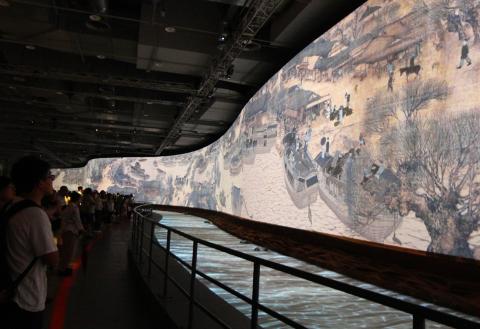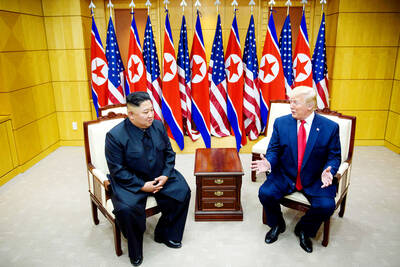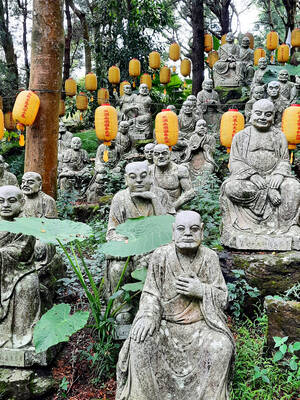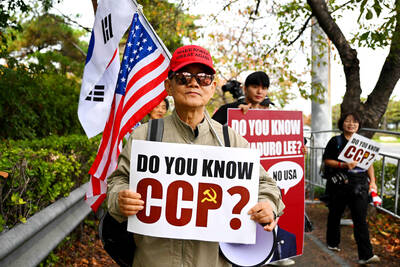After debuting at the Expo 2010 Shanghai China (2010上海世界博覽會) and traveling to Hong Kong and Macau, an animated version of the Song Dynasty painting Along the River During the Qingming Festival (清明上河圖), by 12th-century artist Zhang Zeduan (張澤端), is on show in Taipei. The 25cm by 529cm original is a panoramic portrayal of everyday life in Bianjing (汴京), today’s Kaifeng (開封), the capital of China during the Song Dynasty. Despite its name, the scroll depicts the architecture and scenery of the period and the apparel and activities of the rich and poor, not the rituals of the Qingming Festival (清明節), otherwise known as Tomb Sweeping Festival. Thirty times larger than the original painting, the animated version, which is titled River of Wisdom, is beamed onto a 6m by 110m screen by 12 projectors. The entire work was digitalized by Crystal CG (水晶石數字科技公司) and its subjects and backdrops move and make sounds. There are two versions of the animation that alternate every two minutes: day (691 animated people) and night (377 animated people). Also on display are life-size replicas of the original painting, a Ming Dynasty copy by Qiu Ying (仇英), and a more extravagant 1736 version known as the Qingyuan copy (清院本), commissioned by the Qing court. The original work is stored at the Palace Museum in Beijing.
■ River of Wisdom, 9am to 9pm Mondays to Saturdays, 9am to 6pm on Sundays at Taipei International Flora Exposition EXPO Dome (台北花博爭艷館), 1 Yumen St, Taipei City (台北市玉門街1號) until Sept. 4
■ Tickets are NT$220, available at convenience stores through 7-Eleven ibon, FamilyMart (全家) FamiPort, Hi-Life (萊爾富) Life-ET, and OK Mart OK go kiosks and online at tickets.books.com.tw

Photo Courtesy of Lin King
■ On the Web: river.ishow.gmg.tw

US President Donald Trump may have hoped for an impromptu talk with his old friend Kim Jong-un during a recent trip to Asia, but analysts say the increasingly emboldened North Korean despot had few good reasons to join the photo-op. Trump sent repeated overtures to Kim during his barnstorming tour of Asia, saying he was “100 percent” open to a meeting and even bucking decades of US policy by conceding that North Korea was “sort of a nuclear power.” But Pyongyang kept mum on the invitation, instead firing off missiles and sending its foreign minister to Russia and Belarus, with whom it

When Taiwan was battered by storms this summer, the only crumb of comfort I could take was knowing that some advice I’d drafted several weeks earlier had been correct. Regarding the Southern Cross-Island Highway (南橫公路), a spectacular high-elevation route connecting Taiwan’s southwest with the country’s southeast, I’d written: “The precarious existence of this road cannot be overstated; those hoping to drive or ride all the way across should have a backup plan.” As this article was going to press, the middle section of the highway, between Meishankou (梅山口) in Kaohsiung and Siangyang (向陽) in Taitung County, was still closed to outsiders

Many people noticed the flood of pro-China propaganda across a number of venues in recent weeks that looks like a coordinated assault on US Taiwan policy. It does look like an effort intended to influence the US before the meeting between US President Donald Trump and Chinese dictator Xi Jinping (習近平) over the weekend. Jennifer Kavanagh’s piece in the New York Times in September appears to be the opening strike of the current campaign. She followed up last week in the Lowy Interpreter, blaming the US for causing the PRC to escalate in the Philippines and Taiwan, saying that as

The Chinese Communist Party (CCP) has a dystopian, radical and dangerous conception of itself. Few are aware of this very fundamental difference between how they view power and how the rest of the world does. Even those of us who have lived in China sometimes fall back into the trap of viewing it through the lens of the power relationships common throughout the rest of the world, instead of understanding the CCP as it conceives of itself. Broadly speaking, the concepts of the people, race, culture, civilization, nation, government and religion are separate, though often overlapping and intertwined. A government